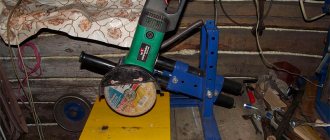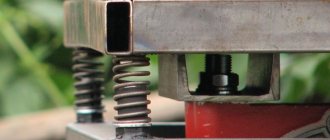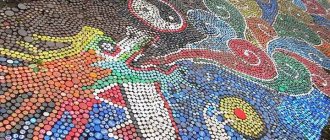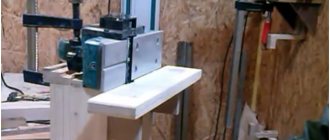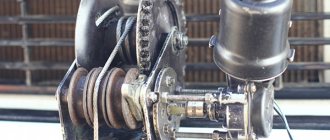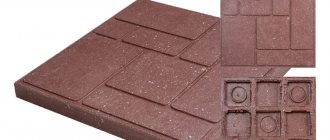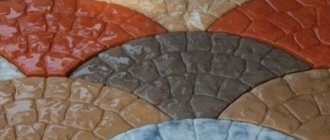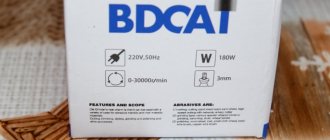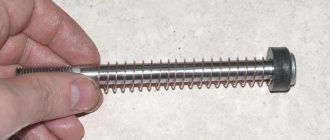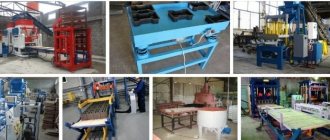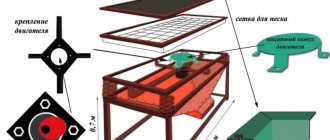Paving slabs have become an integral part of the exteriors of courtyards and adjacent areas of private houses, driveways and garden paths of country cottages and dachas, parking lots of companies and industrial enterprises. It would take a long time to list all the possible uses of this type of decorative coating. There are a large number of types and classes of tiles, differing in size and characteristics. One of the methods of its production is casting from special molds.
A machine for the production of paving slabs is used to cast paving stones. There are several types of machines, differing from each other in the level of mechanization of the process and the volume of production of finished products. The simplest of them are vibrating tables. You can make such a machine for making paving slabs with your own hands at home.
What is a professional machine?
The standard device looks like a complex installation. Despite its modest dimensions, it is used to organize not only the production of street tiles, but also to establish mass production, that is, to open their own business. In the second case, it is more advisable to buy a ready-made device. This machine has five main parts:
- matrix;
- platform;
- container for solution;
- vibration installation;
- press.
The operating principle is organized as follows:
- The mixture is placed in the tank. It moves to the forms and concrete is fed through the bottom into the matrices.
- After this, plates are placed on top and the mass is pressed to the platform.
- For better compaction and removal of voids, vibration is applied. The vibrations combined with high pressure instantly compact the solution.
- Afterwards, the forms are raised, and the finished elements remain on the platform.
- Next, they are taken away along with the stand and dried.
A professional machine designed for the production of durable outdoor tiles in large quantities
A similar design can be made with your own hands, however, its power will be significantly less compared to professional equipment.
Components of a brick making machine
Let's consider the design and components of a mini-vibrocompression machine, which can be manufactured at home.
The design of the brick making press includes:
- Table.
- Tabletop.
- Vibrating device.
- Pressing device.
Diagram of a vibrating table and sand sifter
Each of these parts consists of several units and is connected with other parts structurally and technologically. Before starting work, it is necessary to complete working drawings of the device, which will allow you to determine the design of the homemade press, the list of materials and the need for them.
Let's consider the possibility of making components with our own hands, as well as the advisability of using ready-made units manufactured in industrial conditions in critical places. Due to the loads experienced by a concrete block press during operation, a home-made press machine is made of steel blanks fastened together by electric welding, which ensures a rigid connection of the press parts and almost does not respond to vibration.
Equipment for home production
To make high-quality paving slabs yourself, you need to prepare the appropriate equipment. Otherwise, you will not achieve the ideal state of concrete after pouring into the matrices.
The following devices are used in the production of standard products:
- vibrating table;
- pressing machine;
- polyurethane molds for filling.
The vibration table can be upgraded and equipped with a pressure plate.
High-quality facing material is produced using a vibrating table
A person without design experience is unlikely to produce such equipment without errors, but it’s still worth a try.
Selection and installation of an electric motor or vibrator
The vibration motor, taking into account the simultaneous impact of press pressure on the tabletop, must have sufficient power. Making a homemade concrete block press is a labor-intensive process, and its failure due to the installation of a obviously unsuitable low-power motor is an unjustified excess. Therefore, when assembling a homemade mini-brick press, it is advisable to use commercially available reliable industrial vibrator motors with the ability to regulate the frequency and amplitude of vibrations, for example, VI-99/E.
Taking into account that the pressure on the mold will be exerted in the vertical plane, high-quality compaction will be ensured by vibration in the horizontal plane. To do this, the vibration motor must be installed vertically on the tabletop, from below, approximately at the intersection of its diagonals (center of gravity). To do this, a steel bracket with holes for mounting the electric motor is welded to the tabletop from below.
The engine is mounted on bolts using split washers (Grover washers), which prevent the nuts from loosening during vibration.
Vibrating table with electric motor
How to make a vibration pressing machine
The simplest option is to make a vibrating table. To construct such equipment, you will need:
- welding machine;
- Bulgarian;
- drill;
- mounting bolts.
The drawings are carefully worked out in advance to calculate the optimal position of the engine under the tabletop. Then a frame of 50x50 mm corners is welded and fixed on legs with plates at the lower end. They are useful to fix the installation in one place. Next, strong metal springs are fixed in the corners and in the middle. A flat tabletop with sides is installed on them. A motor, for example from a washing machine, is screwed onto the bottom.
Scheme of a homemade vibrating table
To set up the press, an additional panel in the form of a flat cover is fixed to the vibrating table, and a lot of pressure is applied to it. Separate elements are used, which are slightly smaller in size than the molds and fit into them to press the solution.
If you rely on a production sample of the machine, you will need sheet metal and a profile. The frame is welded from the latter. The container with the solution should have the shape of a trapezoid, tapering downwards. The bottom is hinged and ensures the supply of the mixture into the matrices, which are formwork made of metal and wooden planks. A sliding press is made on top from plates that fit into the shape of the clamping mechanism. Vibration is added to ensure air release. This option is applicable in the production of ordinary rectangular tiles.
It’s not easy to assemble a complete installation yourself, but it’s possible
Making a brick making machine table
The design of a home-made machine table consists of legs welded to a rectangular frame measuring 50x70 or 70x100 cm. The size of the frame depends on the size of the tabletop, which, in turn, depends on the size of the paving stones being made and the number of forms that are simultaneously pressed. The height of the table (the length of the legs) is selected according to the person performing the work and can range from 80 to 110 cm.
The vibration press can create tiles from two to ten centimeters thick
Vibration machine legs
For the manufacture of racks of a homemade press machine, channel No. 10, a pipe with a diameter of 80-100 mm or angle steel 100x100 mm are suitable. Four blanks of the required length are cut with your own hands using a grinder, and their sections are carefully trimmed.
If the brick press will be installed permanently, then when marking the cut, 20-25 cm must be added to the designed length of the legs - the depth to which the supports will be concreted into the base. You can not add these 20-25 cm, and weld the legs to the embedded parts, previously concreted into the floor with your own hands.
If the machine is made portable, then rectangular support plates made of steel 3-4 mm thick are welded onto the lower ends of the legs to evenly distribute the weight of the unit on the base.
Channel No. 10
Vibropress frame
The upper frame part of the table is made of I-beam No. 10-12, channel No. 10-12 or angle steel measuring 100x100 mm. The blanks are cut to size with your own hands, laid out on a horizontal plane and connected by electric welding.
All welding seams are cleaned of slag and ground with a grinder for subsequent coating with anti-corrosion paint.
The table frame after welding should not have plane deviations.
Table assembly
The frame is placed on a horizontal plane with the bottom up, and the legs are welded to it strictly vertically at the corners. For a more rigid connection of these parts, gusset inserts made of sheet steel 3-4 mm thick in the shape of a right triangle are welded between the frame and legs. Between the legs at the middle of their height along the perimeter, additional connections are also attached by welding for rigidity.
To make a table, you can choose only high-quality materials and fastenings
How to make forms
If you want to make shaped street tiles, you will need molds for pouring the mortar. You can make them yourself. You will need polyurethane with a hardener and a sample tile or a homemade element. It is made of gypsum - the best option for creating figures of any complexity and configuration. The volumetric element is filled with liquid polyurethane. Since it is mixed with a hardener, after a while a soft but solid product will be obtained, which can be removed from the workpiece after complete drying.
Polyurethane imprints every bend, indentation or protrusion of the matrix, so select only reference samples as a template.
To ensure sufficient production volumes, you will need at least 10 molds.
It is better to buy ready-made polyurethane matrices for the solution
Making a table top for a brick making machine
The tabletop of a mini-machine for making paving stones by vibropressing must be rigid and durable, so its frame consists not only of perimeter parts, but also of transverse struts. The frame with spacers is made of angle steel measuring 70x70 mm or channel No. 8-10. The format of the frame must correspond to the format of the table frame, and the dimensions of the tabletop can be equal to the dimensions of the frame or exceed them by 5-7 cm.
The blanks cut with a grinder and trimmed are laid on a horizontal surface and connected by electric welding, the welding seams are ground. All frame parts must be located in the same plane. The working position of the frame is that the horizontal shelves of the corner or channel should be located on top.
According to the dimensions of the frame, a rectangle is cut out of sheet steel 8-10 mm thick, which is placed on the frame from above and welded to it from below by electric welding. The working position of the tabletop on the machine is with the steel sheet facing up.
Production recommendations
To fully produce paving slabs, it is not enough to simply purchase the necessary equipment; it is important to follow the technology and take into account all the key points associated with this process:
- A machine with a press must apply uniform, equal pressure to each centimeter of the solution.
- Strong vibration violates the integrity of the mass and breaks the tile.
- In the preparation of concrete, crushed stone and plasticizers are used, which increase the strength and elasticity of the solution.
- The grade of cement should not be lower than M500.
- Before using the tiles, the workpieces are completely dried, this usually takes at least a day. To speed up the process, special dryers are used.
- It is important to maintain optimal tile storage conditions in the production area: humidity, temperature, dust level, etc.
- The equipment is regularly cleaned and checked for proper functioning.
- When planning mass production of products, you will need to prepare an area for storing products.
If you want to start a business producing paving slabs at home, it is better to purchase factory equipment. But for personal needs, a do-it-yourself machine is a completely suitable replacement.
Making a tile vibrator with your own hands
The structure consists of a metal or plywood plate (multilayer plywood with a thickness of at least 10 mm is used), a vibrator with an eccentric and a drive motor. An electric motor is usually used.
Important! It is not advisable to install an eccentric on the electric motor shaft, since the bearings will quickly fail.
Such a mechanical vibrating plate can be used not only for surface preparation and direct compaction of laid paving slabs. With its help you can prepare any flat area.
But the most significant savings are the production (and not the purchase) of paving slabs or paving stones. In this case, it is not necessary to purchase industrial equipment; you can make a brick press with your own hands.
Features of use and advantages of vibrocompression technology
The technological process of vibratory pressing is essentially incredibly simple - a mixture of the components that make up the base of the tile needs to be poured inside a rigid matrix, which is located on a vibrating frame. In addition to vibration, the mixture is additionally pressed by a vibrating punch, which accurately follows the contours of the matrix. Its action continues until the mixture is guaranteed to be compacted.
After this, the punch and matrix are separated, and the entire finished product is removed from the pallet. The main advantage of this technique is the ability to quickly perform significant amounts of work and ease of production with little labor input. To organize the technological process, all you need is a brick making press - no more complex devices are required.
Vibration press operation
To start the machine, just perform a series of simple steps. The technology for producing tiles using this method is simple:
- Lubricate the matrix with oil.
- Pour the concrete mixture inside the mold. Place the matrix on the tabletop, ensuring complete alignment with the punch.
- Use the lever to ensure compaction of the mixture by turning on the vibration mechanism for a while.
- Remove the product from the mold and send it to dry.
To determine the mixture composition required for paving slabs, its desired characteristics are taken into account. Traditionally, the components are cement with sand, crushed stone screenings, and pigment diluted with water. When you manage to make a brick making machine yourself, the production process itself is much simpler. It is only necessary to scrupulously follow the recipe composition of the ingredients used to prepare the mixture.
